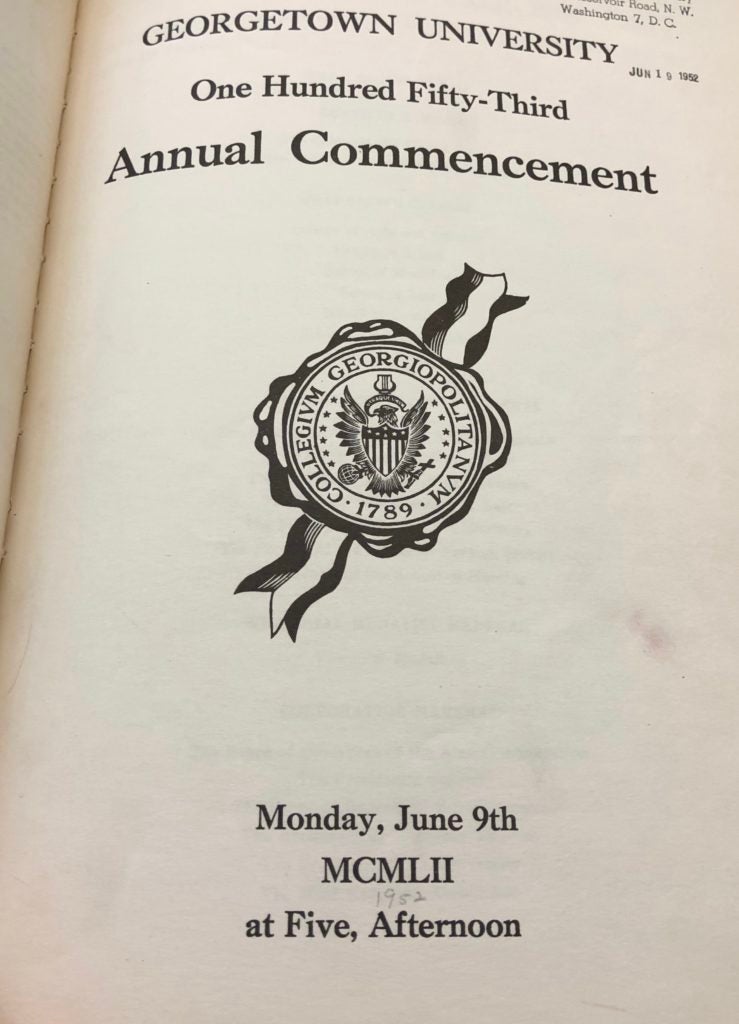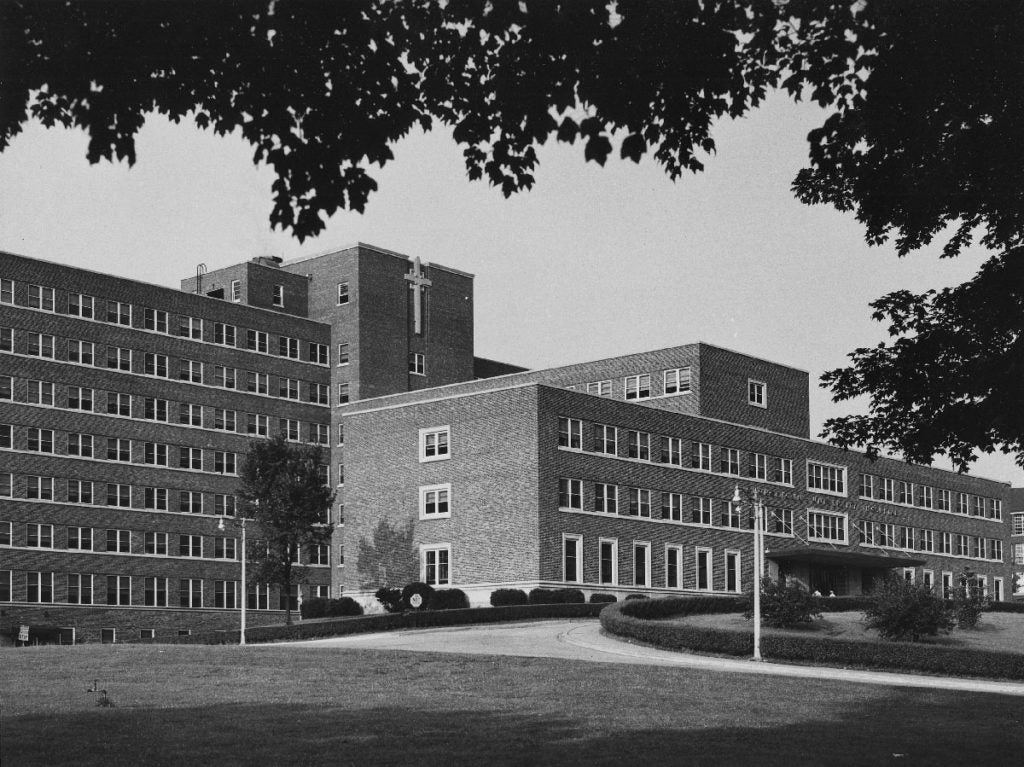Class of 1952 Nursing Alumna Deeply Values Georgetown Education
March 13, 2020 – In 1947, Elizabeth Clark (BSN 1952) came to Georgetown to study to become a nurse. Nearly 75 years later, Clark, who turns 91 early next month, still values the education she received in those years.

A snapshot of the cover of the 1952 Commencement program in which Clark and her classmates are listed. The class graduated June 9, 1952 at 5 pm. (Georgetown University Archives)
After spending time raising her children, including alumna Mary Ann Clark (BSN 1976), Clark went on to work at the Washington DC VA Medical Center on Irving Street. She found that her Georgetown education provided a strong foundation even with the technology changes in health care.
“I have to say that my education was extremely helpful to me,” she said during a recent interview. “My education stood by me completely.”
Five Years of Study
Clark spent five years at Georgetown earning her baccalaureate through a former program that included two years of study in the College of Arts and Sciences followed by three years of clinical study and preparation in the School of Nursing.
The university’s 1952 graduation program listed 11 women, including Clark, under the bachelor of science in nursing designation. Four of them were already registered nurses, according to the print program, which is housed in the Georgetown Archives.
Additionally, Clark indicated she and several of her 1952 classmates were the first students to complete the five-year model.
It is possible, after reviewing various class years in a 1957 alumni directory and Commencement programs, that certain members of the Class of 1952 were the first to enter the five-year program right out of high school.
During the decade that preceded Clark’s graduation, women were listed as having earned the bachelor of science in nursing at Georgetown. But a few were members of the Sisters of Saint Francis, and many were also listed as having earlier received the three-year diploma in nursing on Georgetown’s campus.
According to Dr. Alma Woolley’s history of the school and other archival records, Georgetown did offer, for a time, “extension courses” for diploma nurses and the sisters to complete a bachelor’s degree. And it’s also plausible that, as the five-year program got up and running, some of the grads had done the College coursework and the School of Nursing diploma in reverse order.
The College Years
During the College years, Clark took science and humanities courses focusing on, for example, biology, chemistry, religion, and Shakespeare. She also remembers being in the classes with male students from the College and the School of Foreign Service.
“They didn’t want girls in class,” she added with a laugh because the young men did not want to have to look their best for morning classes. Yet, “they were nice to us and very helpful, and I made a lot of good friends in the College.” Some of her classmates were World War II veterans using the G.I. Bill.
Clark thought back to her science classes, which were taught by Dr. William Taylor and Dr. Richard Weber. “They were both good, but Dr. Taylor was excellent,” she said. “And I really learned a lot, and it stuck with me for a lifetime.”
She shared an amusing story about how she and her classmates took flashlights with them so that they could see to write in their notebooks as Dr. Taylor showed course material on a projector in the dark.
Nursing Education
After the College portion of their education, Clark and classmates attended, along with the three-year diploma nursing students, the School of Nursing.
“We finished our two years of university and then went to the nursing school,” she explained. “We were all two years older than those girls.”
“We had a lot of clinical,” Clark said, noting she remembered being alone in the hospital nursery at night under the supervision of a registered nurse. She also recalled traveling to the Seton Institute in Baltimore for the psychiatric rotation.

An image of Georgetown University Hospital in 1950 (Courtesy Digital Georgetown, Bob Young Jr., Georgetown University Archives, Visit Digital Georgetown for information.)
Clark was a commuter student her first two years, but then lived on campus. “We lived in the old hospital,” she said. “The nuns had lived there, and they had a chapel in the center on the top floor. And there were six private rooms on each side of the chapel, and we were up there” on that floor. A bus used to take students back and forth between the old hospital complex on 35th and N Streets NW and the new one on Reservoir Road NW.
“In the day, we would walk through the university and go up through the woods. Now, it is all built up. At night, of course, you took the bus,” she said.
She also had fond memories of the Sisters of Charity of Nazareth, who came to Georgetown in 1947 to run both the hospital and the nursing school. “I liked all of them,” she said about the sisters. “They were very helpful and very good, and, of course, they were the head of every ward.”
Campus life memories also came back during the conversation, including that the football team was good. She also enjoyed attending the Mask and Bauble shows. “We’d all go to the plays,” Clark said.
– Bill Cessato
- Tagged
- Nursing History
